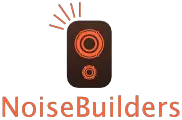Phantom power is a widely misunderstood feature of audio equipment, and many beginner audio enthusiasts don’t really know what it is for, what equipment needs it and how it works. As such, the question arises, if indeed, you do need phantom power if you have an audio interface? Let’s find out.
You will only need phantom power if you have audio equipment that requires it, such as a DI box, preamplifier, or condenser microphone. Audio interfaces do not need or use phantom power to work, but some provide it as an additional feature to power these other pieces of audio equipment.
If you are confused about what phantom power is, what equipment needs it to work, or if your audio interface needs it or even provides it, then this article has you covered. We will detail phantom power and what precisely its function is in a professional audio environment going over what needs it and what provides it.
Understanding phantom power
It will help if we understand what phantom power is and its application to the audio industry to determine whether audio interfaces need or use it.
Phantom Power is a term given to the process of delivering DC (Direct Current) to microphones requiring electric power to drive active circuitry.
…and most commonly the DC power is provided by the pre-amp/mixer and delivered to the condenser microphone via the mic cable.
Take note that only XLR cables are designed to carry phantom power through them due to how these cables are made. Hence, these cables (XLR cables) carry both the current and the audio signal simultaneously to a microphone or audio device that requires it.
Phantom power for condenser microphones
Typically, phantom power will be used to drive the electronics and built-in preamplifier of a condenser microphone. Condenser microphones are different from dynamic microphones because, unlike dynamic mics, they have these electronic components and a built-in preamp requiring power to work.
Without phantom power, condenser microphones would not be able to function correctly. A condenser microphone will attain phantom power from the device it is plugged into in a typical situation. This can be a mixing desk, a stand-alone external preamplifier, and even an audio interface.
Selecting the phantom power option on your device (usually a button with a label titled “48v”) will cause that device to send 48 volts of current along the XLR cable up to the condenser microphone.
We said that both the audio signal and phantom power are transmitted along one cable (an XLR cable). Due to this, you will only be using one XLR cable and not two (one for the audio and one for the phantom power) in order for your condenser microphone to work correctly.
Many new audio enthusiasts get confused when they realize that both the audio and phantom power are being carried over just the one XLR cable and think they need some form of a splitter and two cables to achieve the required result. This is not correct.
Furthermore, it would help if you understand that although dynamic microphones also use an XLR connection point, they do not require phantom power. This is because they do not require any power due to them not having any internal electronic components, as we said.
Do I need phantom power if I have an audio interface?
Instead of asking if you need phantom power if you have an audio interface, you should ask what audio equipment you have that requires phantom power for it to function. Additionally, does your audio interface require phantom power to run?
Pertaining to the latter, audio interfaces typically do not require phantom power to run. This is because they will either get their power from a power supply, or in most common situations, they will get power from the USB cable that is plugged into your computer, laptop, or Mac.
Furthermore, your audio interface may come with a phantom power option. This does not mean that it will use phantom power to work, but rather, as we said, you will utilize it to power condenser microphones or other pieces of audio equipment that can include an external preamp or DI box.
Hence, if you have audio equipment that requires phantom power, such as a condenser microphone, external preamp, or DI box, and your audio interface does not come with phantom power, then you will have to purchase additional audio equipment that can provide it.
What devices provide phantom power besides an audio interface?
If you have an audio interface that does not include phantom power, but you have equipment such as a condenser microphone that needs it, then there are a couple of avenues you can pursue.
Phantom power supply
Your first option and probably the best one is purchasing a phantom power supply. Phantom power supplies are little audio devices with the sole purpose of providing phantom power to audio equipment. How it would work is that you would insert the phantom power supply in the chain between your condenser microphone and audio interface.
These power supplies will have balanced XLR inputs and outputs. You would plug your mic into the input and then run a cable from the output to your audio interface. The phantom power supply would be powered by a typical power adapter that you would plug into a wall socket or in some cases a USB cable.
Phantom power adapter
If you are not looking to purchase a phantom power supply, then your next option would be to purchase a phantom power adapter like the SHURE X2U. This is a little device that plugs into your condenser microphone via an XLR input and converts the signal to a USB signal.
Take note that using one of these devices would negate the need for using an audio interface. Thus we don’t really recommend it unless there are instances where you would only need to use one mic.
Furthermore, you probably have an audio interface because you want to record multiple streams of audio, and as such, a phantom power supply with multiple inputs and outputs would be your best option.
Using a mixing desk or a preamplifiers phantom power
The only other option that you will have if you do not intend to purchase a phantom power supply or XLR to USB adapter is to use the phantom power that is available on a mixing desk or an external preamplifier.
Both of these will work the same way as a phantom power supply, but they will have additional features that you can use to change the characteristics of the audio.
Take note that in some cases, instead of inserting the mixing desk between the microphone and audio interface, the mixing desk can be used as an audio interface itself. Many mixing desks nowadays give the option of connecting it to a computer via a USB cable and will act as an audio interface in this situation.
Conclusion
We discovered that depending on your situation, you may or may not need phantom power. It is not that your audio interface requires it to work but rather other pieces of professional audio equipment such as condenser microphones, preamplifiers, and DI boxes.
Hence, some audio interfaces come with phantom power as an added feature allowing you to power these pieces of audio equipment without the need for you to purchase additional equipment that can provide it.
Suppose your audio interface does not come with phantom power, but you have a condenser microphone or other pieces of audio equipment that require it. In that case, your best option is to purchase a phantom power supply, use a mixing desk or external preamp that can provide it.
Remember to place these pieces of equipment in the middle of your audio chain between the equipment that needs the phantom power and your audio interface.

